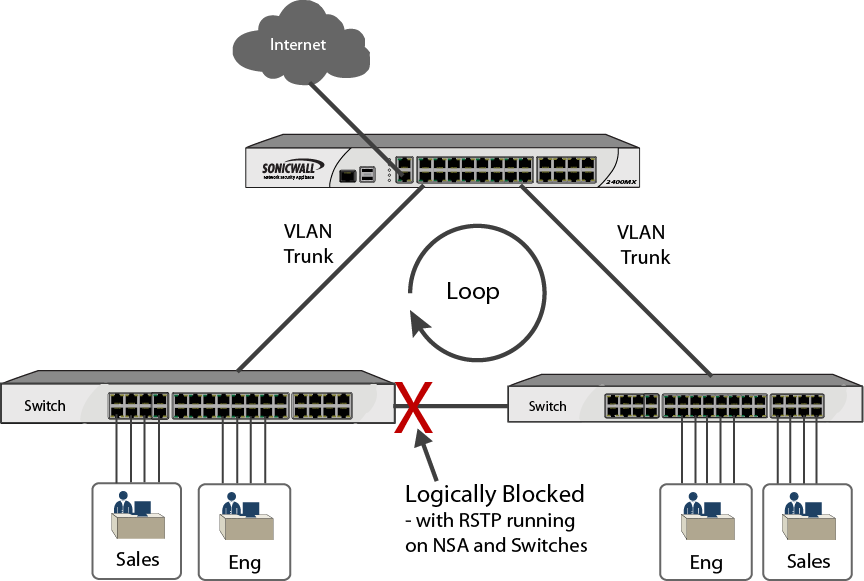
The Rapid Spanning Tree Protocol (RSTP) is implemented to support Layer 2 network designs with redundant paths.
SonicWall’s RSTP implementation conforms to the IEEE 802.1D-2004 specification. The 802.1D specification is VLAN unaware and creates a common spanning tree (CST) that is applied to all VLANs present in the network. The RSTP implementation is backward compatible with the original 802.1D standard (STP).
RSTP supports configuration of the following objects:
Auto detection of non-edge ports is not supported. A non-edge port is one that is connected directly to an end-user computer such as a PC or laptop.
You can enable/disable RSTP on VLAN trunk ports only. By default, RSTP is disabled on trunk ports. You should enable the RSTP before performing physical network connectivity between the NSA 2400MX and another switch.
When the NSA 2400MX is booting up, ports are disabled until Spanning Tree configuration is applied. The NSA 2400MX automatically soft-bridges the STP Bridge Protocol Data Units (BPDUs) between the ports to prevent loops when ports in the same VLAN (PortShield group or L2 Bridge mode) are connected to another switch. This allows the remote switch to detect that its ports are connected to another switch and it can automatically block certain ports.
Spanning Tree Configuration

You can view the following in the Switching > Rapid Spanning Tree page:
You can configure the following in the Switching > Rapid Spanning Tree page:
